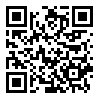Volume 7, Issue 2 (9-2020)
jhbmi 2020, 7(2): 91-101 |
Back to browse issues page
Download citation:
BibTeX | RIS | EndNote | Medlars | ProCite | Reference Manager | RefWorks
Send citation to:



BibTeX | RIS | EndNote | Medlars | ProCite | Reference Manager | RefWorks
Send citation to:
Ghayoumi Zadeh H, Fayazi A, Binazir B, Yargholi M. Extraction of Suitable Features for Breast Cancer Detection Using Dynamic Analysis of Thermographic Images. jhbmi 2020; 7 (2) :91-101
URL: http://jhbmi.ir/article-1-381-en.html
URL: http://jhbmi.ir/article-1-381-en.html
Ph.D. in Control Engineering, Assistant Professor, Electrical Engineering Dept., Faculty of Engineering, Vali-e-Asr University of Rafsanjan, Rafsanjan, Iran
Abstract: (5407 Views)
Introduction: Thermography is a non-invasive imaging technique that can be used to diagnose breast cancer. In this study, a method was presented for the extraction of suitable features in dynamic thermographic images of breast. The extracted features can help classify thermographic images as cancerous or healthy.
Method: In this descriptive-analytical study, the images were taken from the IC/UFF database. A total of 196 people, including 41 cancer patients and 155 healthy individuals were investigated. Each person had 10 thermographic images and in total, 1960 images were analyzed. The images were captured using the FLIR ThermaCam S45 camera. The proposed model was presented based on a series of breast thermographic images of an individual to extract 8 suitable features. The extracted features included mean, standard deviation, entropy, kurtosis, homogeneity, energy, skewness, and variance.
Results: The extracted features were evaluated by the classifiers including the decision tree, support vector machine, quadratic symmetric analysis, and K-nearest neighbor algorithm using the ten-fold cross validation. The accuracy and sensitivity were 99% and 99.33% for decision tree algorithm, 98.46% and 95.12% for support vector machine algorithm, 100% and 100%, and 99% and 97.56% for K-nearest neighbor algorithm.
Conclusion: The results of this study showed that among the first-order statistical features, mean difference, skewness, entropy, and standard deviation are the most effective features which help to detect asymmetry. The features extracted by the proposed model can help classify the individuals into healthy or cancer-affected by thermal images.
Method: In this descriptive-analytical study, the images were taken from the IC/UFF database. A total of 196 people, including 41 cancer patients and 155 healthy individuals were investigated. Each person had 10 thermographic images and in total, 1960 images were analyzed. The images were captured using the FLIR ThermaCam S45 camera. The proposed model was presented based on a series of breast thermographic images of an individual to extract 8 suitable features. The extracted features included mean, standard deviation, entropy, kurtosis, homogeneity, energy, skewness, and variance.
Results: The extracted features were evaluated by the classifiers including the decision tree, support vector machine, quadratic symmetric analysis, and K-nearest neighbor algorithm using the ten-fold cross validation. The accuracy and sensitivity were 99% and 99.33% for decision tree algorithm, 98.46% and 95.12% for support vector machine algorithm, 100% and 100%, and 99% and 97.56% for K-nearest neighbor algorithm.
Conclusion: The results of this study showed that among the first-order statistical features, mean difference, skewness, entropy, and standard deviation are the most effective features which help to detect asymmetry. The features extracted by the proposed model can help classify the individuals into healthy or cancer-affected by thermal images.
Type of Study: Original Article |
Subject:
Artificial Intelligence in Healthcare
Received: 2019/02/20 | Accepted: 2019/10/1
Received: 2019/02/20 | Accepted: 2019/10/1
Audio File [MP3 948 KB] (186 Download)
Send email to the article author
| Rights and permissions | |
 |
This work is licensed under a Creative Commons Attribution-NonCommercial 4.0 International License. |




